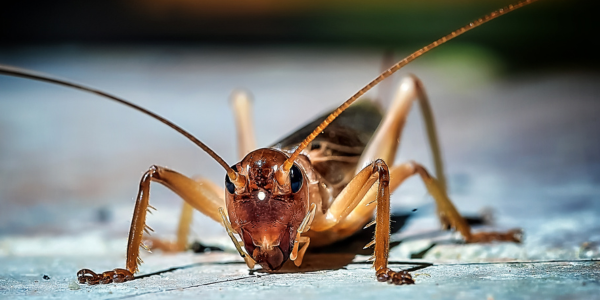
How to Keep Crickets from Taking Over Your Home This Fall
As fall settles in here in New York, crickets are looking for warmer places to call home—and your house might just be at the top of their list! If you’ve ever heard that endless chirping inside, you know how annoying these pests can be. Crickets in the house aren’t just a nuisance because of their chirping; they can also cause greater damage inside your home. Here’s how to keep crickets out.
What Attracts Crickets in the House?
Understanding what attracts crickets to your house in the first place is key to preventing an infestation. The primary attractors for crickets are warmth, moisture, and food.
As temperatures begin to drop in the fall, crickets seek out warm places where they can survive the colder weather. Homes with consistent indoor heating create an ideal environment for these pests.
Moisture is another major factor. Crickets thrive in damp environments, which is why they are frequently found in basements, crawl spaces, and bathrooms where humidity levels are higher. Leaky pipes or poor ventilation can increase moisture levels, making your home even more attractive to crickets.
Finally, crickets are scavengers and will eat almost anything. From food crumbs left on the floor to fabric and plants, crickets have a wide-ranging diet. If your home has exposed food sources or clutter, it can become a prime location for crickets to feast and multiply.
Common Types of Crickets You’ll Find Indoors
In New York, homeowners may encounter a few specific types of crickets during the fall:
House crickets are the most common indoor invaders. These crickets are yellowish-brown with distinctive dark bands on their heads. They are particularly drawn to warm, humid environments, which is why they often find their way inside as the temperatures drop. Once inside, they can easily make themselves at home in basements, kitchens, or other areas where moisture is present.
Camel crickets, often referred to as cave crickets, are another species that prefers dark, damp spaces. They have a humpbacked appearance and long legs, making them more distinct than house crickets. Camel crickets typically inhabit basements, crawl spaces, and other low-light areas, where they can thrive without much disturbance.
Field crickets, which are usually dark brown or black, tend to stay outdoors but will seek warmth indoors as temperatures decline. Field crickets are particularly known for their loud chirping, which can be a major nuisance once they invade your living space.
How Do Crickets Get in the House?
Crickets are opportunistic pests, taking advantage of any available entry point to get inside homes as the weather cools down.
One of the most common ways crickets enter homes is through small cracks and gaps around windows, doors, or the foundation of the building. These openings might be tiny, but crickets are able to squeeze through and begin infesting indoor spaces.
Even more obvious pathways like open doors and windows provide easy access. Crickets only need a moment to sneak inside when doors or windows are left ajar, especially in the evening when they are most active.
Crickets can also hitchhike into your home. Firewood, boxes, and holiday decorations stored outside are prime hiding spots for crickets. When you bring these items indoors, you might be unknowingly transporting crickets (or other common household pests!) along with them.
How to Get Rid of Crickets in the House
If you’ve already noticed crickets in your house or heard the unmistakable sound of crickets chirping, it’s important to take immediate steps to get rid of them. Start by sealing off any potential entry points that crickets could be using to get inside. This means inspecting your home for cracks, gaps, or damaged screens around doors, windows, and your home’s foundation. Sealing these openings will help keep crickets out and prevent further infestations.
Next, focus on reducing moisture levels in your home. Since crickets love damp areas, it’s essential to fix any leaks, run dehumidifiers in problem areas like basements, and ensure your gutters are functioning properly. Keeping your home dry and well-ventilated will make it less attractive to crickets and other pests.
Eliminating clutter in areas where crickets like to hide is another crucial step. Crickets often take refuge in piles of boxes, clothes, or other stored items, particularly in basements and storage areas. By keeping these spaces organized and clutter-free, you remove their hiding spots, making it harder for crickets to remain inside your home.
Additionally, consider adjusting your outdoor lighting. Crickets are drawn to bright lights, especially at night. Switching to yellow bug lights or minimizing outdoor lighting can help reduce the number of crickets near your home, lowering the chances they’ll find their way inside.
Get Ahead of Fall’s Cricket Problem
While DIY methods can help, crickets can be persistent and tricky to fully eliminate. That’s where Knockout Pest Control comes in. We specialize in professional cricket control services tailored to your home’s specific needs. Our experienced technicians use a combination of techniques to target cricket infestations at their source, ensuring that your home is fully protected.
If you’re struggling with crickets in the house this fall, don’t wait for the problem to get worse. Schedule a professional cricket control service today and keep your home cricket-free this fall.


